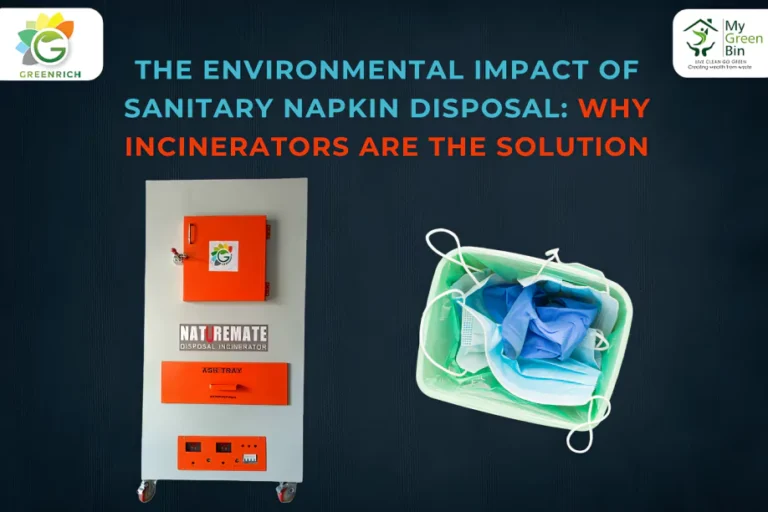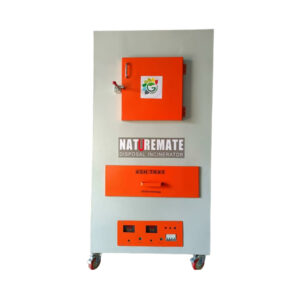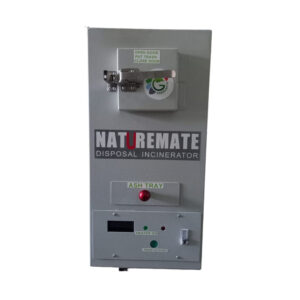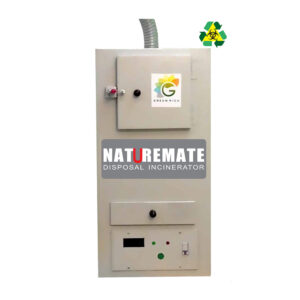
Introduction
Every year, billions of sanitary napkins are used and discarded, posing a significant environmental challenge. These products, often made with non-biodegradable materials, end up in landfills or are improperly disposed of, causing pollution and health hazards. Incinerators offer a promising solution to manage this waste sustainably. This blog explores the environmental impact of sanitary napkin disposal and why incinerators might be the best answer.
Understanding the Scale of the Problem
The Growing Waste Crisis
The global usage of sanitary napkins is staggering, with an estimated 12 billion pads disposed of annually in the United States alone. Most sanitary napkins contain plastic, which can take hundreds of years to decompose. This contributes to a significant waste problem, as these products fill up landfills and pollute our environment.
Improper disposal of sanitary napkins not only adds to the waste crisis but also poses severe environmental consequences. When not disposed of correctly, these products can block sewage systems and pollute water bodies. The chemicals and plastic components of sanitary napkins can leach into the soil and water, harming wildlife and ecosystems.
Current Sanitary Napkin Disposal Methods and Their Drawbacks
Common Disposal Practices
Landfills:
- Issues: Sanitary napkins in landfills take centuries to decompose due to their plastic content. As they break down slowly, they release harmful chemicals into the soil and groundwater.
- Environmental Impact: The accumulation of these products in landfills leads to long-term environmental damage, including soil contamination and the release of greenhouse gases.
- Issues: Sanitary napkins in landfills take centuries to decompose due to their plastic content. As they break down slowly, they release harmful chemicals into the soil and groundwater.
Burning:
- Health Hazards: Open burning of sanitary napkins is a common practice in some areas, but it releases toxic fumes and harmful pollutants into the air.
- Environmental Impact: This method contributes to air pollution and poses health risks to those exposed to the smoke, including respiratory problems and other serious health issues.
- Health Hazards: Open burning of sanitary napkins is a common practice in some areas, but it releases toxic fumes and harmful pollutants into the air.
The Case for Incinerators
How Incinerators Work
Sanitary napkin incinerators are devices designed to safely and efficiently burn used sanitary products. They operate at high temperatures, ensuring complete combustion of the napkins and reducing them to a small amount of ash. Modern incinerators are equipped with filtration systems that capture harmful emissions, minimizing environmental impact.
Environmental Benefits
Incinerators significantly reduce the volume of waste generated by sanitary napkins. By converting these products into ash, incinerators decrease the burden on landfills and prevent the environmental damage associated with plastic decomposition. Moreover, advanced incinerators with emission control technologies produce minimal air pollution compared to open burning.
Buy our Automatic Incinerator Waste Disposal for Hospitals, Schools and more.
Environmental Benefits of Using Incinerators
Reducing Landfill Waste
Incineration reduces the volume of sanitary napkin waste by up to 90%. This significant reduction alleviates the pressure on landfills, allowing for more efficient waste management. By decreasing the amount of non-biodegradable waste in landfills, we can reduce soil and groundwater contamination.
Lowering Greenhouse Gas Emissions
Traditional disposal methods, such as landfilling and open burning, contribute to greenhouse gas emissions. Landfills emit methane, a potent greenhouse gas, as sanitary napkins decompose. Incinerators, on the other hand, can be designed to capture and use the heat generated during combustion, reducing overall emissions and energy consumption.
Health and Hygiene Advantages
Minimizing Health Risks
Improper disposal of sanitary napkins poses health risks, particularly in areas with inadequate waste management systems. Incinerators provide a hygienic solution by ensuring that used sanitary products are completely destroyed. This reduces the risk of disease transmission and eliminates breeding grounds for pests and pathogens.
Implementing Incinerators: Challenges and Solutions
Addressing Common Concerns
Cost:
- Challenge: The initial cost of installing incinerators can be high, making it a barrier to widespread adoption.
- Solution: Governments and organizations can provide subsidies or financial incentives to encourage the use of incinerators. Additionally, community-based incineration programs can share costs and resources.
- Challenge: The initial cost of installing incinerators can be high, making it a barrier to widespread adoption.
Public Awareness:
- Challenge: Many people are unaware of the environmental benefits and health advantages of incinerators.
- Solution: Educational campaigns can raise awareness about the importance of proper sanitary napkin disposal and the role of incinerators in sustainable waste management. Schools, healthcare providers, and community groups can play a vital role in spreading this knowledge.
- Challenge: Many people are unaware of the environmental benefits and health advantages of incinerators.
Conclusion
The environmental impact of sanitary napkin disposal is a pressing issue that requires immediate attention. Incinerators offer a viable and sustainable solution to this problem by significantly reducing waste volume, lowering greenhouse gas emissions, and minimizing health risks. By supporting the implementation of sanitary napkin incinerators, we can make a positive impact on the environment and public health. Let’s work together to promote sustainable waste management practices and ensure a cleaner, healthier future for all.





